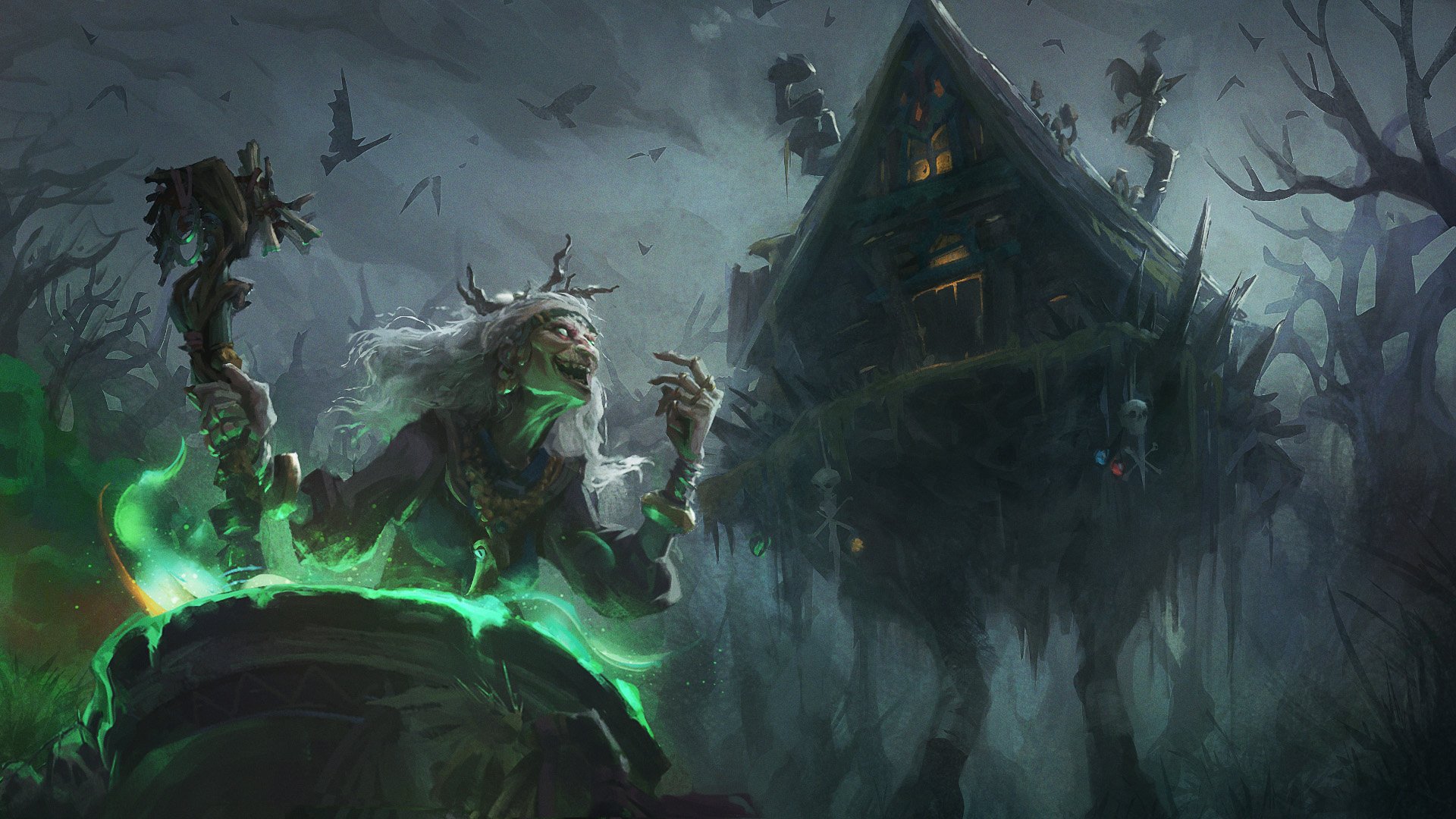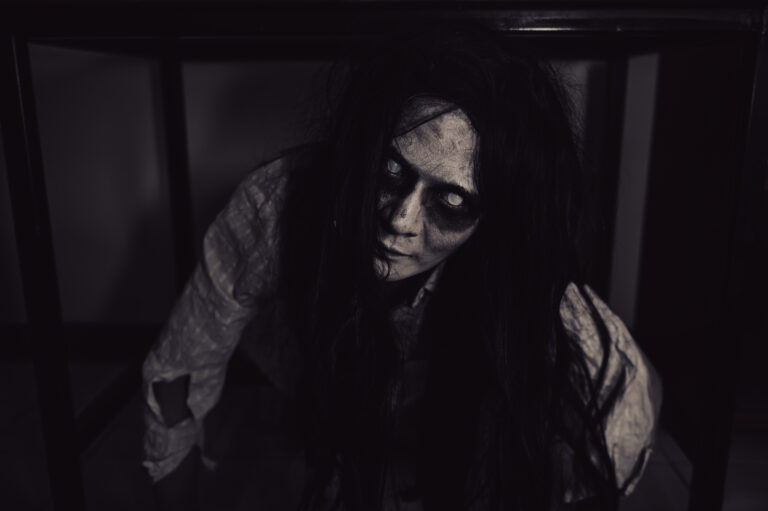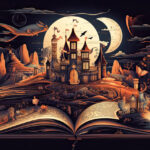The Legend
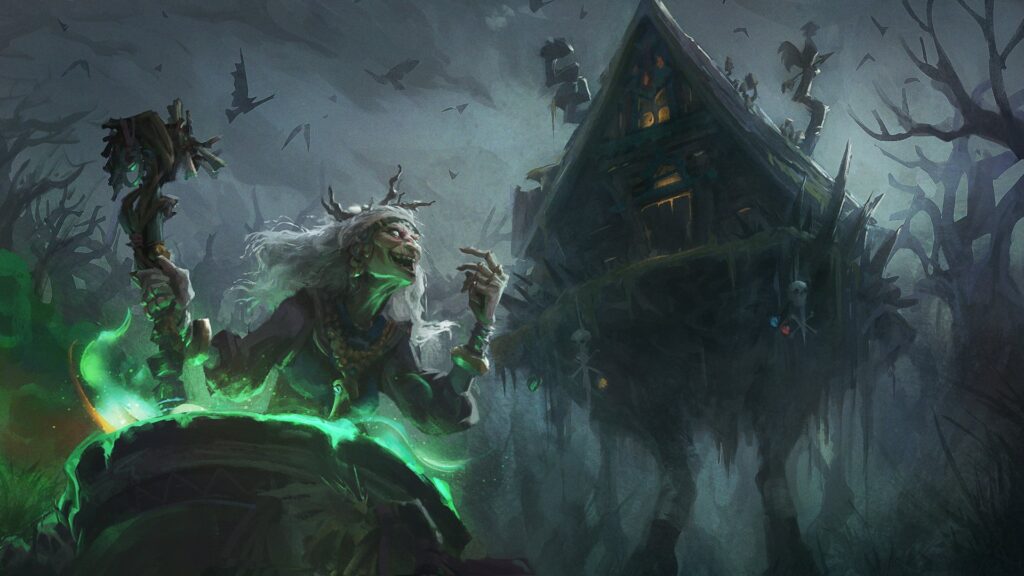
In the deepest, darkest part of the forest, where the branches of ancient trees weave together to block out any trace of sunlight, there stands a hut like no other. Perched upon giant, spindly chicken legs, it teeters as though struggling under a hidden weight, its warped walls groaning softly in the stillness. The air is thick with the heavy scent of rotting leaves, mingling with the sharp tang of iron, as if the forest itself is whispering of dangers lurking just beyond sight. This twisted relic of a hut, draped in moss and dark vines, seems to breathe with an eerie vitality. Its timbered walls, cracked and splintered, exude an ominous presence, and when the wind stirs, the legs scrape against the ground with a sound like brittle bones grinding together. In this place where the line between the known and the unknown blurs, lives a witch named Baba Yaga.
Baba Yaga, a legendary witch of Slavic folklore, is the embodiment of the haggard crone with an apple from Disney’s Snow White, known for her iron teeth and a long crooked nose. She is as old and mysterious as the forest itself, she flies through the night in a mortar. Her silver hair framing her face like a feral halo as she sweeps away her tracks with a pestle. She is an enigma. Beyond her menacing appearance, she is the guardian of ancient secrets, capable of granting wishes or delivering punishment with equal exactness.
Is Baba Yaga a dark force, delighting in the misfortunes of those who wander too close? Or is she a misunderstood guardian, testing those who seek her out and guarding secrets as old as the forest itself? The truth, like the witch herself, is shrouded in mystery. To enter her realm is to step into a world where the lines between right and wrong dissolve, where the clever might find their way, but the unwary may be lost forever in the forest’s dark embrace.
The Story of Vasilisa and Baba Yaga
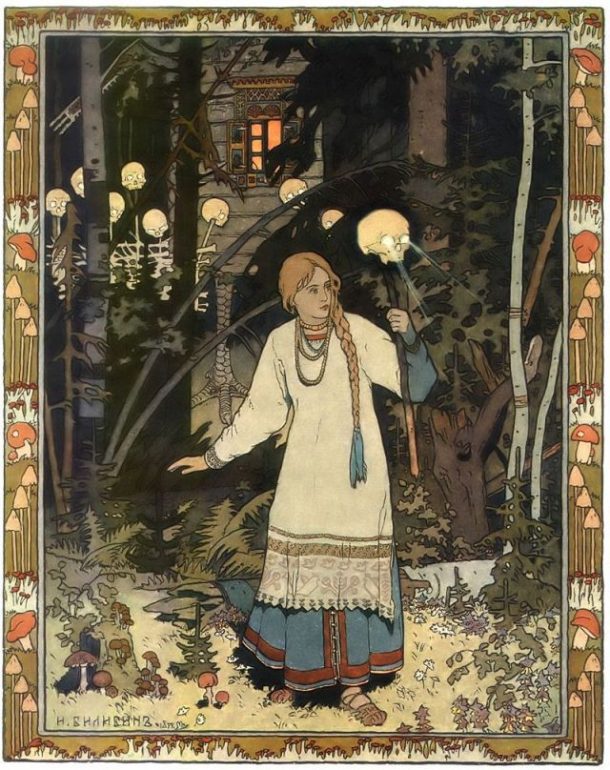
In the realm of Slavic myths, the tale of Vasilisa the Beautiful and her encounter with Baba Yaga is a haunting classic. It unfolds like that of a Grimm fairytale, where grace of beauty and strength of courage intertwine. In this shadowy world where reality blurs and magic dwells is where Vasilisa’s story begins.
Vasilisa was a young girl of extraordinary beauty and a pure heart, but the most extraordinary thing she possessed was a tiny, enchanted, doll her mother had given her before passing away. This doll was no mere charm; it was a faithful guardian, a well of knowledge, and Vasilisa’s solitary ally. She kept the doll tucked safely in her pocket where it stayed ever poised to offer counsel or lend an ear. While others might betray or conspire, this tiny doll was an unyielding comfort, listening to Vasilisa’s troubles with the patience of a therapist or ancient sage who had heard it all before. But of course, every story has its villain, and Vasilisa’s came with her father’s marriage to a cruel stepmother and her two dreadful daughters. The three took pleasure in making Vasilisa’s life a waking nightmare, piling on chores with the kind of glee that only the truly malevolent possess, but with her little doll by her side, Vasilisa endured. Then one day Vasilisa’s step mother sent her on an impossible errand under a veil of dire circumstance. She was to go into the forest and retrieve fire from Baba Yaga, a witch, and not all that sought her out survived.
As Vasilisa neared Baba Yaga’s dwelling, the trees seemed to close in on her, their oppressive silence thickening the air. As Vasilisa moved closer, what she had thought were white pickets in the distance began to take shape. The gleam of polished bone became clear, each “picket” a human femur, lined up in macabre uniformity. The hollow eye sockets of skulls perched atop the fence cast an eerie glow, illuminating the path with an eerie light. Heart pounding, she pressed on, driven by the knowledge that turning back could mean her death just as much as the path forward could. She called upon a mix of determination and hope that the witch might be in a generous mood.
When Baba Yaga finally made her entrance, she was everything the stories promised—terrifying and imposing, with a voice like the crackle of dead branches underfoot. She set Vasilisa three tasks that echoed the tests of Cinderella or Psyche, not designed to break her, but to reveal her inner strength and resourcefulness: sort a mountain of grains, clean her house to a shine that could give the sun a run for its money, and separate poppy seeds from dust. But each night before Vasilisa fell asleep, she would tell her doll of the tasks Baba Yaga asked of her. Her doll would come alive, completing the tasks as Vasalisa slept, handling them with the ease of Rumpelstiltskin spinning straw into gold, unaware of the witch’s increasing frustration.
In the end, Baba Yaga was both bewildered and impressed. There was something about this girl that made her more than just a plaything for the witch’s twisted amusement. Bound by an ancient code that mixed cruelty with a peculiar sense of honor, Baba Yaga handed over the fire Vasilisa sought, along with a skull lantern that burned with an otherworldly light.
When Vasilisa returned home to her step mother and step sisters, the lantern she had been given held one more surprise. The skull glowed and fire shot from the eye sockets, incinerating her wicked stepfamily, leaving only ashes behind and the distinct smell of poetic justice. Thus, Vasilisa’s tale concludes not just with the triumph of good over evil, but with the reminder that even in the darkest corners, a light can be found, though it might have a hidden price. Baba Yaga, the fearsome witch of the forest, had tested Vasilisa, but in doing so, had also gifted her the strength to reclaim her life.
Through this tale, Baba Yaga emerges not just as a figure of dread, but as a keeper of ancient wisdom—a force that, while fearsome, is curiously just. She reminds us that the forest—and life itself—is filled with trials, but for those with enough gumption, even the most formidable challenges can be overcome.
From Goddess to Witch
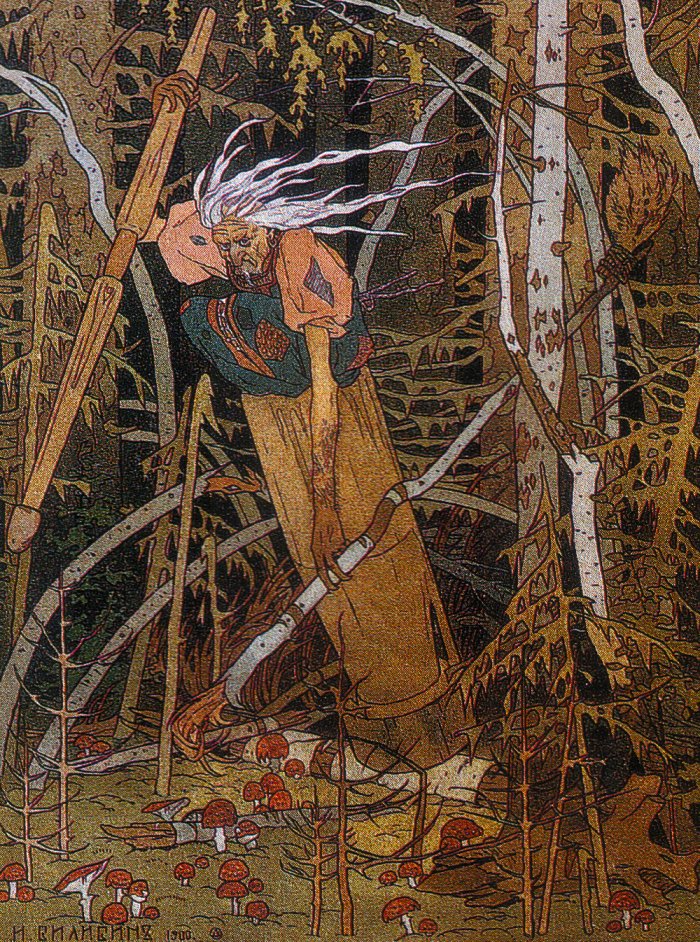
Baba Yaga’s name, and origins, could date back to a time before written history, when Finno-Ugric tribes inhabited what is now Russia 3,000 – 4,000 years ago. This was a time before stone and iron divided the human world, segregating humans from the wild and untamed. In these ancient, pre-Christian days, she might have been more than just a witch, perhaps a powerful nature spirit or even a goddess with a penchant for mischief, embodying the unpredictable forces of the forest. The power she wields is far greater than that of other Russian witches in myth and lore with a domain that seemed to be the heart of the wild, where survival meant respect and harmony with the untamed.
As Slavic cultures evolved and Christianity spread, Baba Yaga’s image began to shift, proving once again that change is the only constant in any existence. The transition from a revered spirit of the wild, to a figure of fear, mirrors the societal scramble to contain the wild chaos of ancient beliefs with a new moral order. This powerful being who may have once been invoked for protection or guidance, became rebranded as a witch and was altered to be the embodiment of a “bad influence.” This rebranding reflected the cultural angst over the encroachment of organized religion and the growing movements of colonization and patriarchy. Every sermon morphing into a ploy to keep the old ways in check.
Yet, even as Baba Yaga transformed into a fearsome crone with a taste for the dramatic, her ancient wisdom remained, much like an old-school librarian who still refuses to use a computer. She didn’t simply punish the wicked or snack on the lost. She tested those who dared to seek her out, embodying the psychological truth that the universe often prefers a good challenge to a straight answer. By rewarding the worthy with knowledge, fire, or freedom, she embodied the duality of human interaction with nature because there must always be balance. The cost for a spring bloom in the snow may end up being several more weeks of winter. Reflecting a broader sociological truth—that nature’s power can be both fearsome and wonderfully unexpected, doling out wisdom to those who respect the pursuit of her gifts and abilities or punishing those who don’t align with her morality.
Baba Yaga thus remains as much a part of the forest as the trees themselves, a delightful enigma straddling the line between two worlds. She symbolizes the psychological tug-of-war between our primal instincts and the polished norms we try to uphold. In her quirky, chaotic way, Baba Yaga stands as a reminder that, even in the most civilized societies, the wild side of life—complete with its unpredictability and occasional absurdity—can never be fully tamed.
Why It Remains Relevant
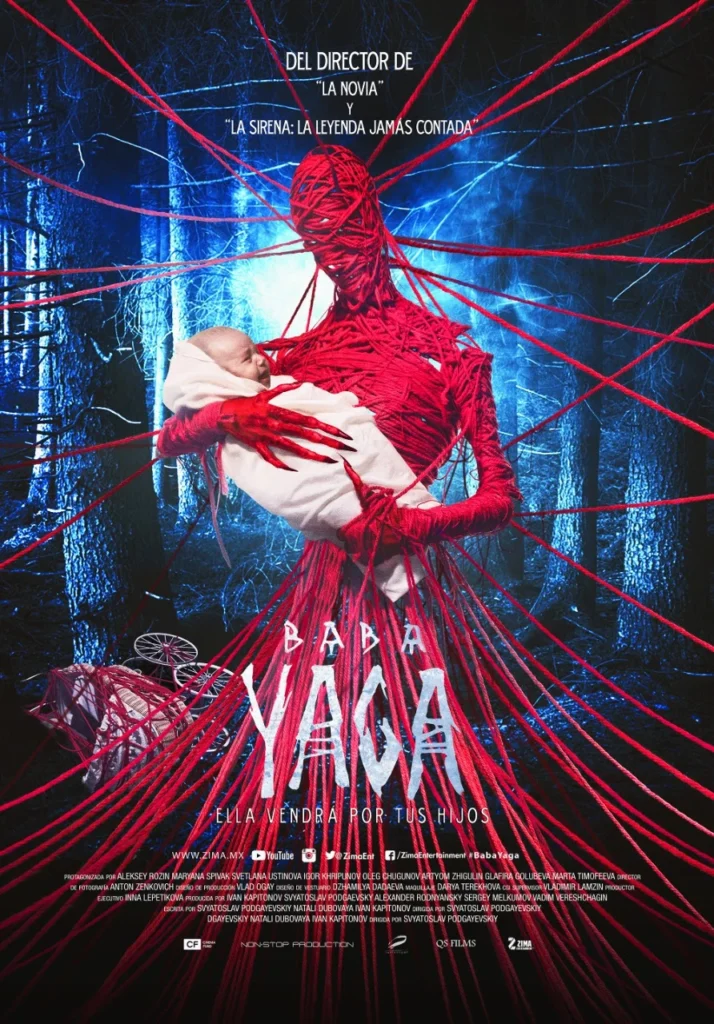
In the shadows of contemporary storytelling, Baba Yaga’s crooked hut still looms, its gnarled timbers and creaking legs a chilling echo from the dark forests of Slavic folklore. From the flickering pages of fantasy novels to the immersive worlds of video games, this ancient witch has found new life in modern media, her presence as palpable as the crackle of a dying fire.
In popular games like The Witcher series, Baba Yaga is reimagined as a formidable force—her legend repurposed to challenge players’ wits and courage. The very air seems to shiver when she appears, her image crackling with the eerie hum of ancient magic and the sharp tang of danger. She embodies the primal wisdom and unpredictable menace of old, her every move accompanied by the whisper of rustling leaves and the scent of earth and decay. Similarly, in novels and films, her spectral form is often draped in the fog of modern themes, such as the struggle for independence, the power of the feminine, and the untamed aspects of nature that refuse to be controlled. One of my favorite depictions of Baba Yaga is Patricia Briggs’ rendition in the Mercy Thompson series.
Yet, Baba Yaga’s resurgence isn’t merely a nostalgic nod to old stories. She is a manifestation of the timeless allure of characters who inhabit the fringes of society. Those who live in a world filled with shades of gray and traverse the in-between areas of morality and power. In an era where the boundaries between right and wrong are increasingly obscured, Baba Yaga resonates as a symbol of chaotic neutrality and raw, unapologetic strength.
She has become an icon of feminine power, her wild, untamed essence evoking the scent of pine and the cool bite of midnight air. Her independence and autonomy stand in stark contrast to the domesticated, predictable roles traditionally assigned to women in more recent years of folklore and history. By wielding respect and fear with equal prowess and living life on her own terms, Baba Yaga stands as a vivid symbol for those who dare to tap into their untamed selves and defy conventional expectations.
What makes Baba Yaga captivating in today’s world is her multifaceted nature and her talent of being both revered and feared, acting as both a guardian and a danger. As society continues to grapple with the dynamics of nature, power, and independence, her enigmatic figure serves as a potent reminder that certain forces are beyond control. Her stories whisper through the cracks of our understanding, echoing the truth that the most powerful figures often dwell in the liminal spaces between light and dark, order and chaos.
Baba Yaga and Our Dark Side
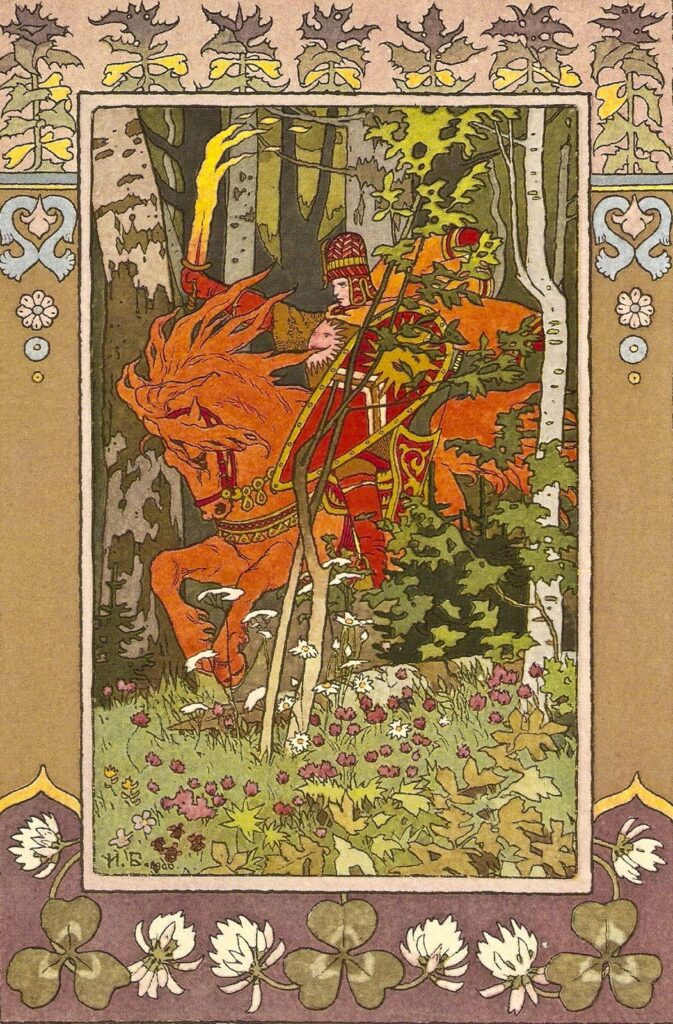
In the shadowy corridors of Jungian psychology, Baba Yaga emerges as a powerful archetype, much like a long-lost relative of the Addams Family, her presence exuding a gothic allure and mysterious charm. She embodies the dark, untamed facets of our collective unconscious—the parts of ourselves that dwell in the murky corners of our psyche. Her essence is steeped in ancient mystery, evoking the crackling tension of an engrained weariness. Her mythical hut, balanced precariously on grotesque chicken legs, conjures images of a decaying fairytale, casting long, menacing shadows that dance like whispers of forgotten fears.
Baba Yaga represents the shadow—the hidden, often suppressed aspects of ourselves that lurk in the dim recesses of our psyche. Her forest home, a labyrinth of darkness and foreboding, is an unsettling reflection of the tumultuous depths within us. As Carl Jung suggests, the shadow encompasses those parts of the self we attempt to ignore or deny, yet which hold potent transformative power. Baba Yaga evokes raw, chaotic energy that still terrifies and fascinates us in its unspoken challenge to confront the darker corners of our being.
Baba Yaga’s enduring role in our cultural narratives reveals the critical importance of acknowledging and integrating our inner chaos, and our inner shadows, for meaningful self-improvement. This theme is explored in works that examine how mythological figures like Baba Yaga symbolize the conflict between civilization and the primal self. Her stories invite us to delve into our inner darkness, akin to navigating a dense, eerie forest where every rustle and shadow hints at hidden truths. Just as Baba Yaga’s forest conceals both danger and wisdom, so too does our psyche contain the potential for profound self-discovery and growth when we dare to explore its hidden realms.
Through her stories, Baba Yaga underscores that stepping into the realm of the unknown, despite its inherent fear and uncertainty, holds the promise of deep personal evolution and self-awareness. She invites us to explore our darker selves, with the assurance that such exploration can yield valuable insights and new understanding.
Conclusion
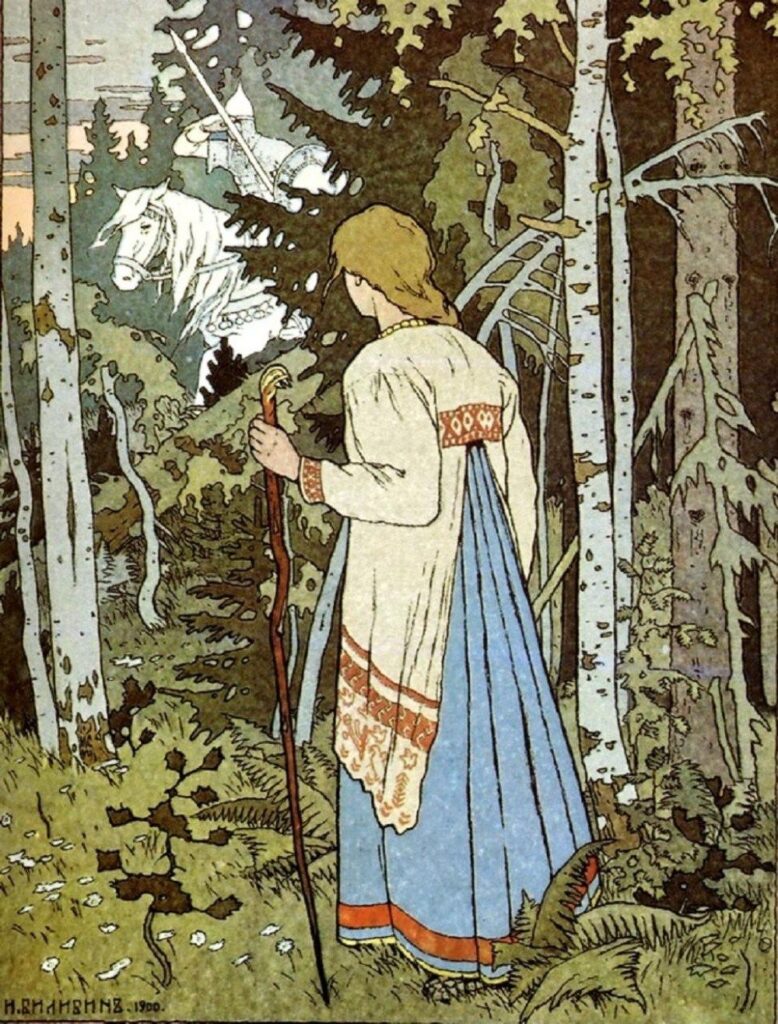
In the shadowy folds of Baba Yaga’s story, lies a deep plunge into the darker side of folklore. Gazing into her eerie forest, you find yourself balancing on the edge of an enigma that resists simple explanations. Her myth beckons you to a realm where the unsettling and the bizarre are woven into the very fabric of existence. Her presence is more than a mere specter of the unknown—it hints at a realm where the peculiar and the unsettling reign supreme. She embodies more than a mere fear of the unknown, pointing to a world where the strange and unsettling hold dominion. Baba Yaga’s legend is layered with its complex layers of fear, wisdom, and wild unpredictability, much like the dark, captivating allure of the Addams Family, where simple resolutions are hard to find.
If Baba Yaga’s mysterious charm and the dark secrets of her forest have sparked your curiosity, there will be more to come. Our exploration of myths and folklore is far from over. Upcoming articles will delve into more fantastical tales and mysterious figures, each promising to unravel new threads of the ancient and the arcane. Until then, keep your curiosity sharp and your sense of wonder alive—because in the realm of myth and legend, there’s always more lurking just out of sight.

